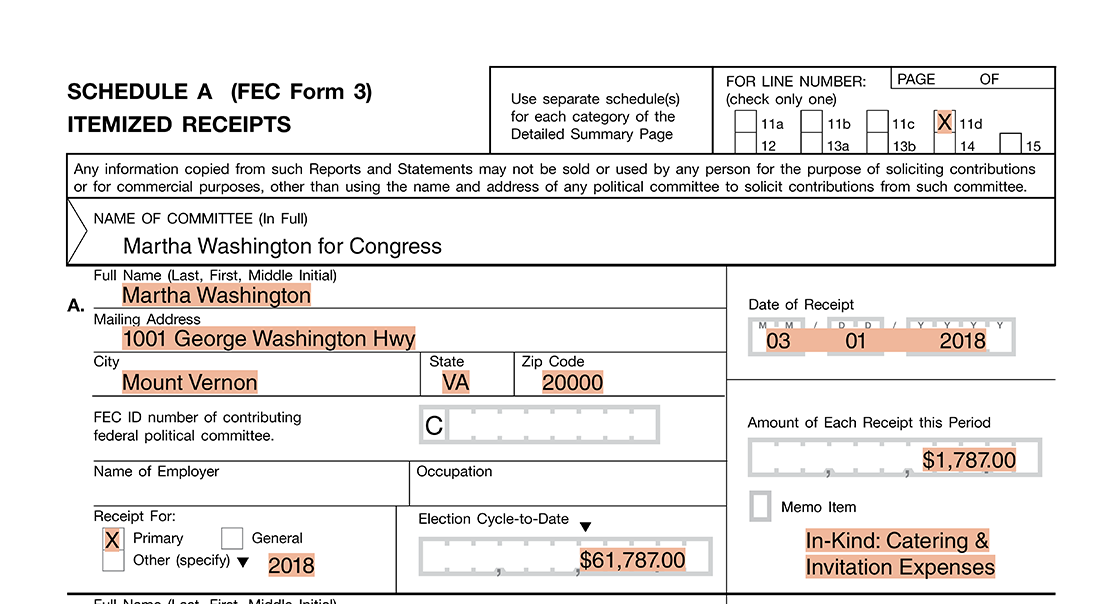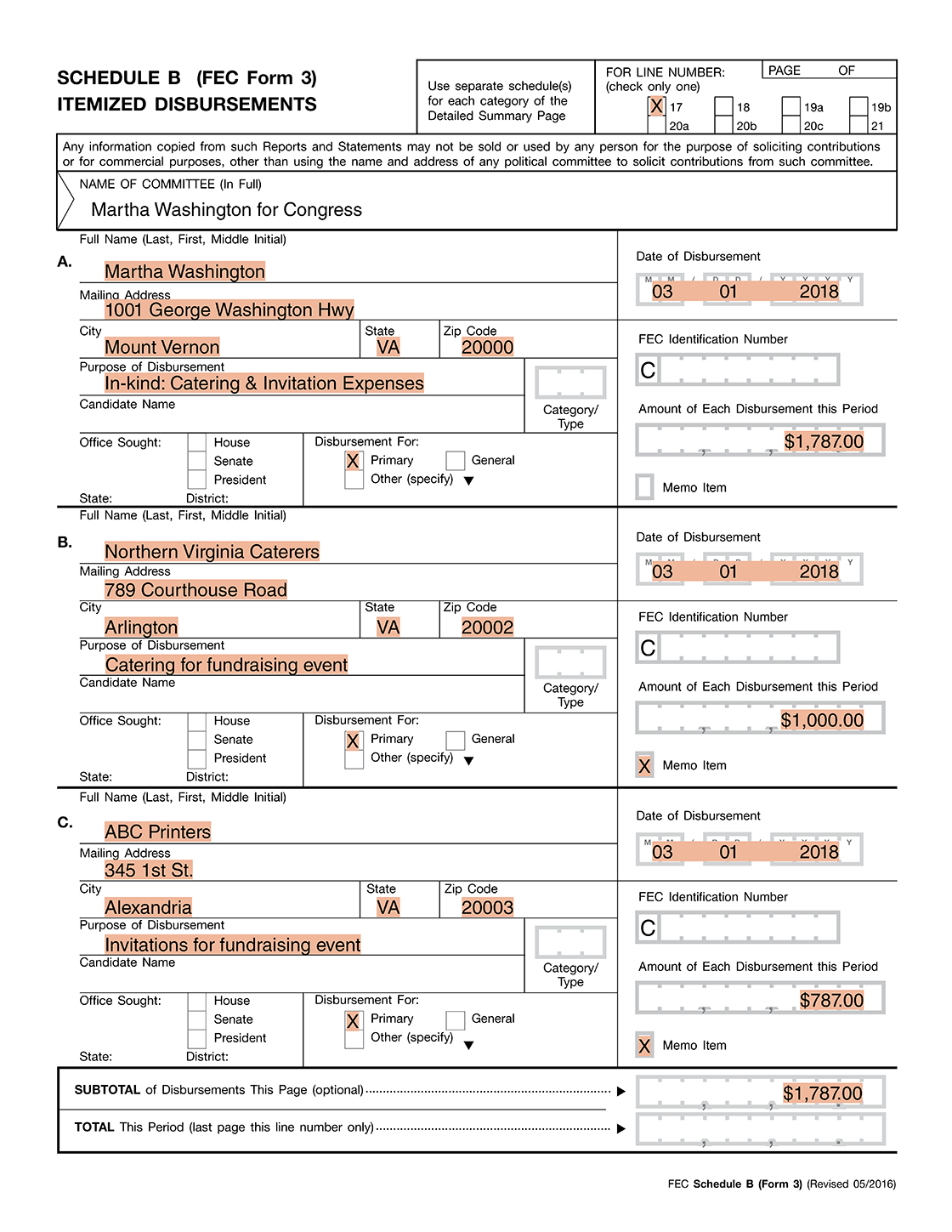In-kind contributions from the candidate
Candidates can pay for campaign expenditures with personal funds. When these expenditures are not to be reimbursed, the committee reports them as in-kind contributions from the candidate. The committee also reports ultimate payee (i.e., the vendor) for the expenditure.
Reporting on candidate forms
House and Senate committees report in-kind contributions on Form 3, Lines 11(d) and 17. When determining whether to itemize an in-kind contribution, treat it the same as a monetary contribution. An in-kind contribution from the candidate is itemized on Schedule A, supporting Line 11(d) when it:
- Exceeds $200 or
- Aggregates over $200 when added to other contributions received from the candidate during the election cycle.
Step 1: Report in-kind as a receipt

The committee reports receiving the candidate’s in-kind contribution on Schedule A supporting Line 11(d). It shows the candidate's name, mailing address, employer, and occupation. It also reports details about the in-kind including its value, the date it was given, election designation, and aggregate election cycle-to-date total for the candidate. The committee includes a notation “In-kind: Catering & Invitation Expenses.”
The amount of an in-kind contribution must also be included in the committee’s total operating expenditures on Line 17 in order to avoid inflating cash on hand. It is itemized as an operating expenditure on Schedule B, supporting Line 17, only if it has to be itemized as a contribution on Schedule A.
If the candidate makes unreimbursed payments on behalf of the committee to any single vendor that exceed $200 for the election cycle, the committee must identify the ultimate payee (i.e., the vendor) in a separate memo entry on Schedule B, supporting Line 17. The memo entry should be linked to the main in-kind entry, or contain a notation explaining that the memo entry relates to the reported in-kind from the candidate. Each memo entry must include the name and address of the vendor to which payment was made, as well as the date, amount and purpose of the payment.
Step 2: Report in-kind as a disbursement with memo entries

The committee also reports the candidate’s in-kind contribution as a disbursement to avoid inflating their cash on hand. The main entry shows the candidate's information and a clear purpose of disbursement: "In-kind: Catering & Invitation Expenses."
In addition, the committee reports memo entries with additional information detailing the ultimate vendors, Northern Virginia Caterers and ABC Printers. The memo entries include the vendors' address information, date of disbursement, amount spent, and clear purposes of disbursement: "Catering for fundraising event" and "Invitations for fundraising event."
Reporting with FECFile
To enter the contribution, go to the Summary Page tab, right click on “Line 11(d) Contributions from the candidate,” and select “new.” Enter the information for the in-kind contribution, and include “in-kind” in the Description field.
To enter the offsetting disbursement, go to the Summary Page tab, right click on “Line 17 Operating expenditures,” and select “new.” Enter the information for the in-kind contribution, and a clear purpose of disbursement including “In-kind:” and a description.
After entering the disbursement, right click on the disbursement and select transaction split. Click “add new…” and enter the original vendor information for the in-kind contribution.
